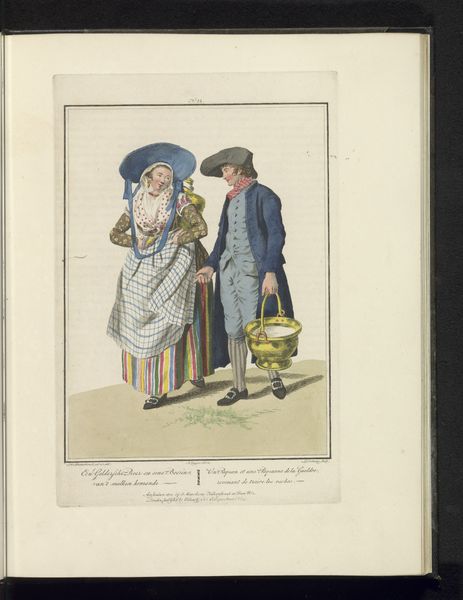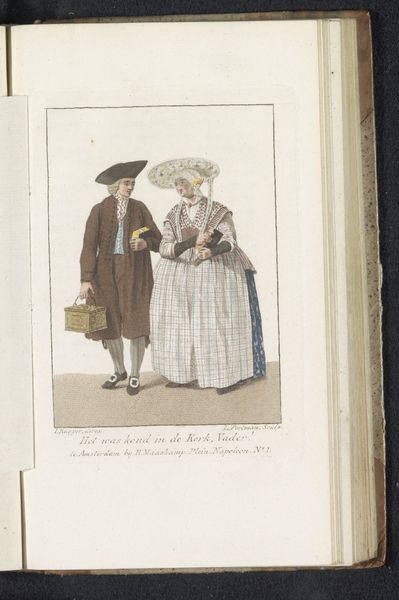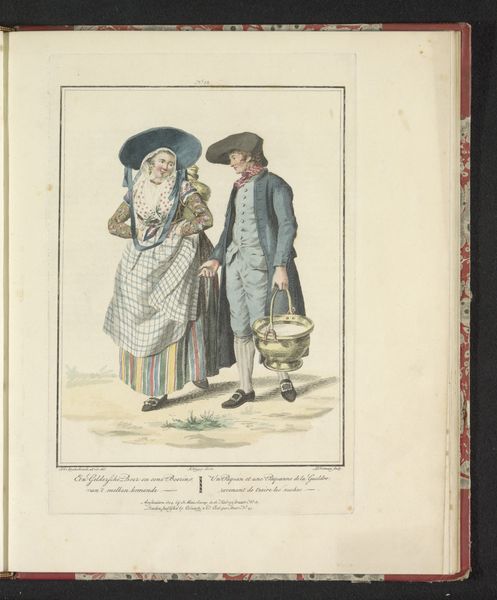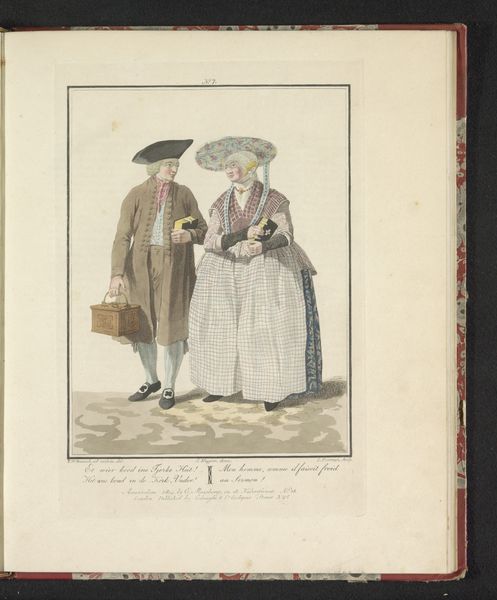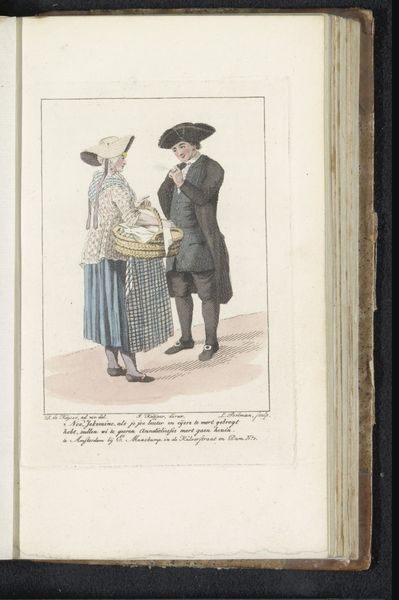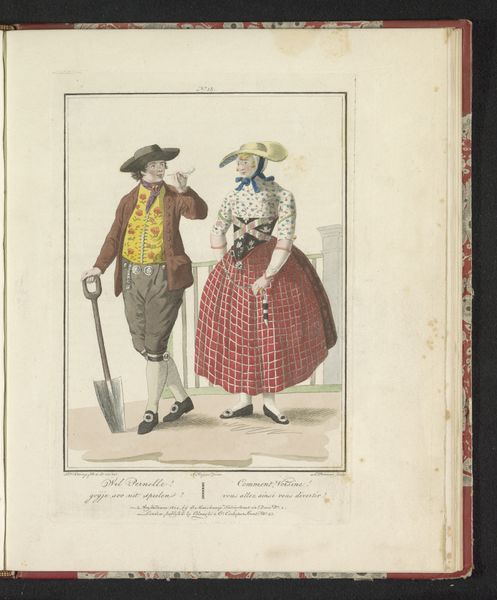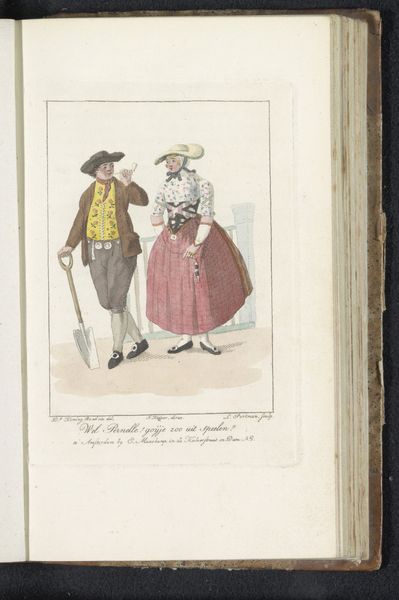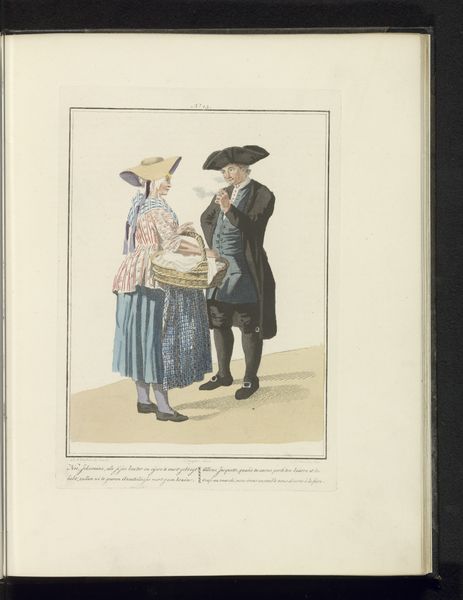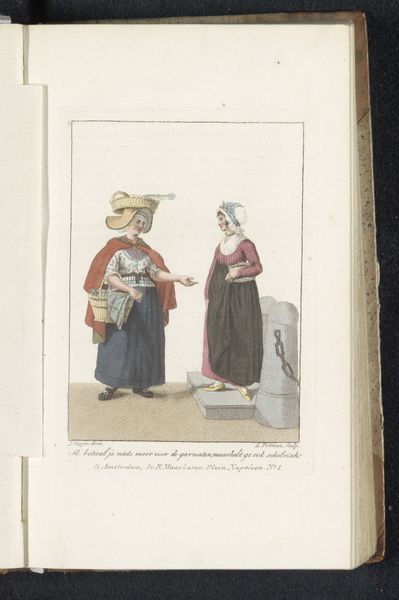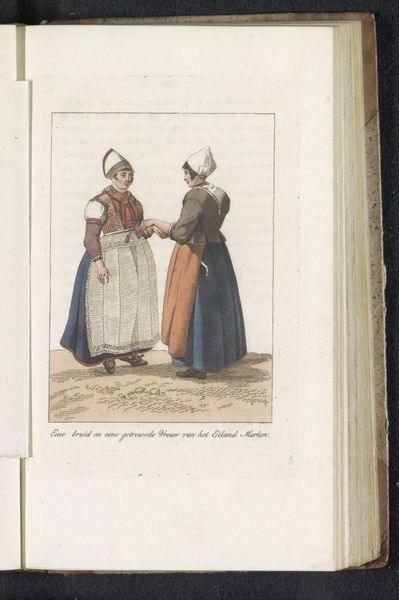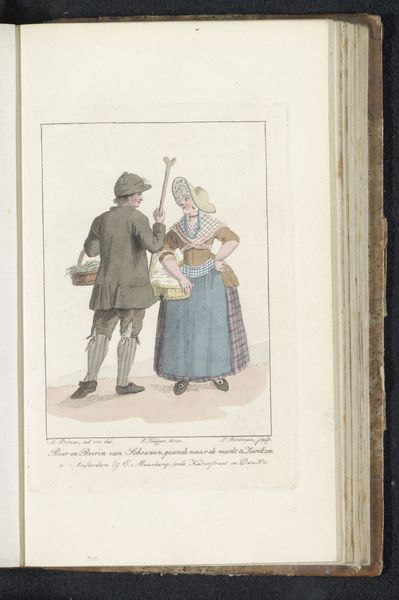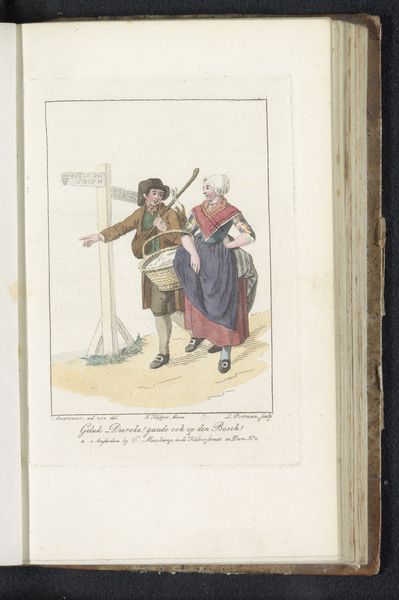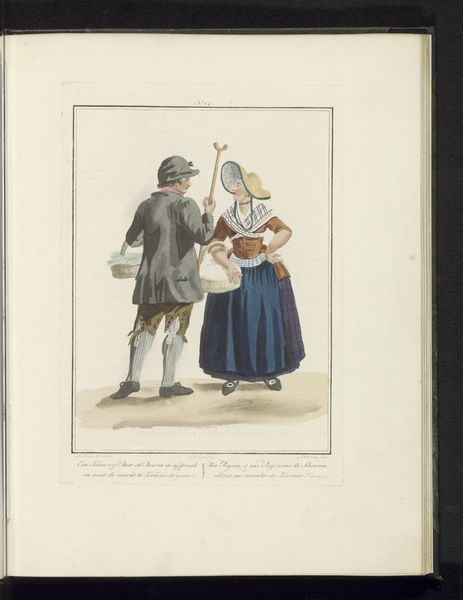
drawing, coloured-pencil, watercolor, pencil
#
portrait
#
drawing
#
coloured-pencil
#
watercolor
#
coloured pencil
#
folk-art
#
romanticism
#
pencil
#
costume
#
watercolour illustration
#
genre-painting
Dimensions: height 133 mm, width 91 mm
Copyright: Rijks Museum: Open Domain
Curator: Ah, the delicacy of lines and pastel shades lends a certain charm to this drawing. It's titled "Gelderse Boer en Boerin," made by Ludwig Gottlieb Portman in 1807. The artwork resides here in the Rijksmuseum. Editor: It's deceptively simple at first glance. A couple holding hands… but then the woman's dress—the apron's patterns layered over the colorful skirt—begins to read as significant. Curator: Precisely. This is more than a genre scene. Notice how the clothing functions as a marker of identity? The specific cuts and details speak to cultural memory. We see not just figures, but a collective visual history embodied in these fabrics and forms. Editor: Right, and Portman’s decision to use colored pencil and watercolor points to the evolving artistic practices of the early 19th century, with accessible media contributing to the romanticization of rural life and traditions. Also, look at the farmer with his milk bucket made of brass. Curator: Brass, an interesting detail! And the fact that he's carrying the milk can, suggesting his work is to serve in such a fashion is not random. One can even notice how carefully the costumes and items have been displayed. Consider the hat shapes, very distinct; and even the position of the figures. Editor: Do you find that Portman attempts to imbue these individuals with some sort of ideal about the rural way of life? It’s as though he’s packaging a simpler existence for urban consumption, highlighting its material quaintness, but also disguising any signs of the actual labor involved. Curator: It’s a romantic vision, certainly. He’s touching upon something primordial, evoking an idealized memory through dress and artifact. Their clothing becomes not merely fabric, but an icon. The composition as a whole, through its medium and the elements present becomes an aspirational emblem of a distinct Dutch identity. Editor: In closing, I suppose Portman's technique opens up new conversations about how cultural identity is consumed. Curator: It offers a beautiful peek into the ongoing relationship between cultural representation and nostalgic symbolism.
Comments
No comments
Be the first to comment and join the conversation on the ultimate creative platform.
